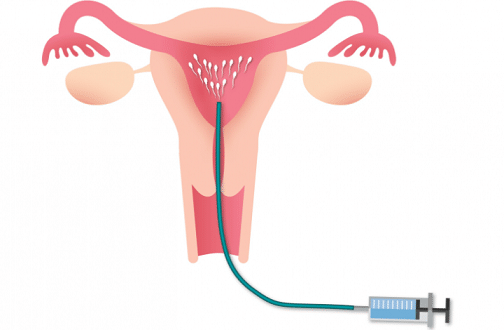
March 18, 2022
Intrauterine Insemination Lloyd|Dr Alvaro Ascenzo, Fertility Treatment in Lima, Fertility Treatment in Lima, Peru, intrauterine insemination, Peru
Thanks to technological advances in medicine, we now have a number of methods available to achieve a pregnancy safely and effectively. One of them is intrauterine insemination, a quick, simple and low-risk procedure.
Thanks to intrauterine insemination, couples who have not yet been able to become parents naturally can finally fulfill their dream.
What is intrauterine insemination?
It is a type of artificial insemination that involves placing the sperm into the woman’s uterus through a catheter. This is done around the time the ovary releases one or more eggs.
With this insemination, the time and distance that the sperm must travel are reduced, which facilitates the fertilization of the egg. The expected result is that the sperm reaches the fallopian tube and fertilizes a waiting egg. Therefore, the chances that a pregnancy will occur are greatly enhanced.
Is this recommended?
There are several reasons why intrauterine insemination may be necessary, the most common are:
- Unexplained infertility in women.
- Mild infertility or subfertility in men.
- Infertility related to endometriosis.
- Ovulation problems in women, that is, absence or reduced number of eggs.
- Allergy to male semen.
- When a woman needs to use donor sperm to get pregnant.
How is the intrauterine insemination procedure performed?
First, our specialist, Dr Alvaro Ascenzo will perform some tests to determine your current condition and the feasibility of the procedure. Although it is not a complicated treatment, a diagnosis is always necessary.

Dr Alvaro Ascenzo has many years of succesful fertility treatments in Lima, Peru
Second, the woman will be prescribed fertility drugs that stimulate ovulation. On the other hand, the semen sample of the man or a donor will be collected, which will go through a “sperm wash”. This consists of eliminating the chemicals that could complicate the pregnancy and keeping only the best quality sperm.
Third, during the procedure a thin tube (catheter) will be inserted into the uterus through the cervix. With a small syringe, the sperm will be inserted into the catheter, which will transport them to the egg to achieve fertilization.
This procedure lasts five to ten minutes and is performed on an outpatient basis, quickly and easily.
What can you expect?
After the procedure, the ideal time to wait is two weeks before taking a pregnancy test. If you take the test too soon, the results could be wrong, either a false positive or a false negative.
Finally, after having performed the home test, the specialist will take a blood test to confirm the results.
If it comes out positive, congratulations! However, if it comes out negative, you could try again with intrauterine insemination or other procedures aimed at the same result.
Are you interested in intrauterine insemination? Contact us.
If you think you might need this type of insemination, please contact us. We can schedule a virtual appointment, or face-to-face.
We are also on WhatsApp for additional information or to schedule an appointment.



Comments
Sorry no comment yet.